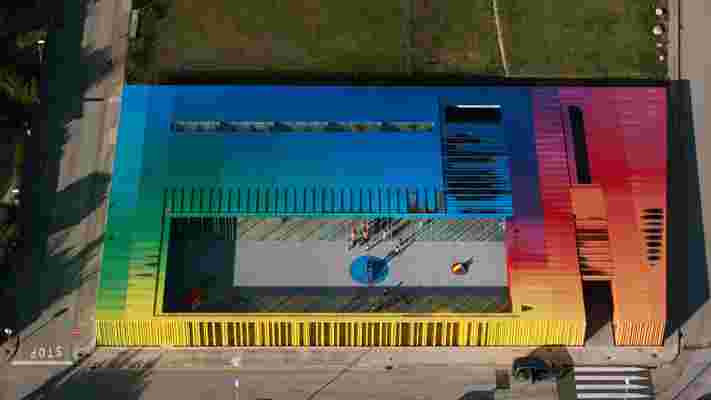The Surprising Reason Why a Spanish Trio Was Awarded This Year's Pritzker Prize
It was announced this morning that the 2017 Pritzker Prize would be awarded to Rafael Aranda, Carme Pigem, and Ramon Vilalta—founders of the Spanish firm RCR Arquitectes. The decision was surprising for two reasons: A trio has never won the award, and many experts did not include RCR Arquitectes on their short list of potential winners (Ghanaian-British architect David Adjaye was considered a front-runner).

The selection appears to be highly political. By honoring the Catalonian trio with an award many view as the Nobel Prize of architecture, the Pritzker jury acknowledged the importance of collaboration in an increasingly divided world. It appears the selection was made in a tacit rejection of exclusionary policies, including those brought forth by Brexit and President Trump's election in the U.S. Indeed, the jury stated that what RCR Arquitectes brings to architecture is an “approach that creates buildings and places that are both local and universal at the same time.” In order words, structures that incorporate local and global influences.
“In this day and age,” the statement continues, “there is an important question that people all over the world are asking, and it is not just about architecture; it is about law, politics, and government as well. We live in a globalized world where we must rely on international influences, trade, discussion, transactions, etc. But more and more people fear that, because of this international influence, we will lose our local values, our local art, and our local customs. They are concerned and sometimes frightened.”
In its selection, the jury—which was composed of such notable figures as former Pritzker winner Glenn Murcutt, architect Benedetta Tagliabue, and U.S. Supreme Court Justice Stephen Breyer—made a sharp turn from previous winners such as Zaha Hadid, a colossal and brilliant figure who built structures that were beautiful but rarely incorporated regional or local influences.
RCR Arquitectes, by contrast, designs schools, houses, and wineries in Europe with an emphasis on the local landscape. They include a combination of traditional materials in each building, such as indigenous stone and brick with manufactured, global elements, like glass and steel. Their designs imply, according to the jury, that we can have “our roots firmly in place and our arms outstretched to the rest of the world. And that is such a wonderfully reassuring answer, particularly if it applies in other areas of modern human life as well.”